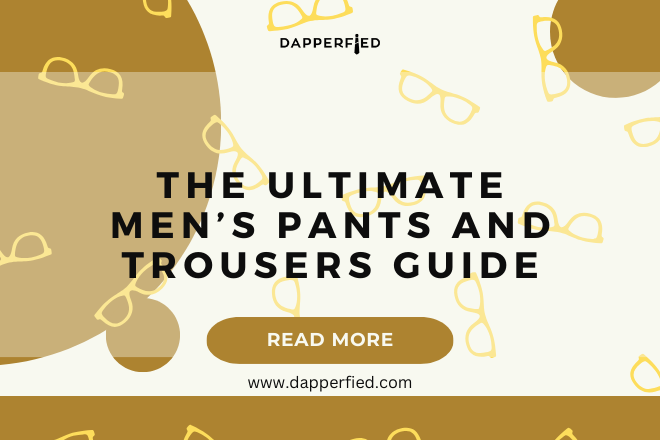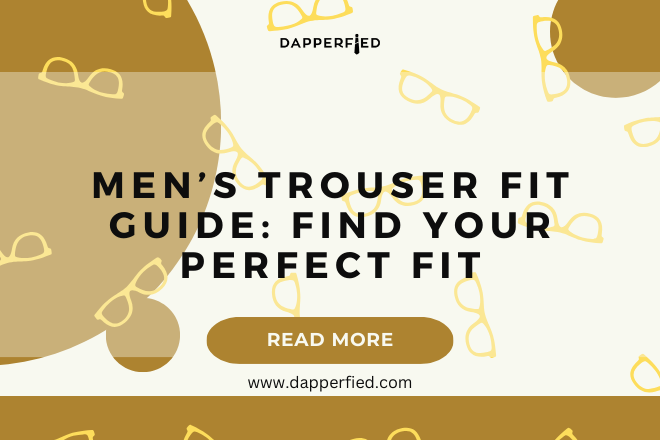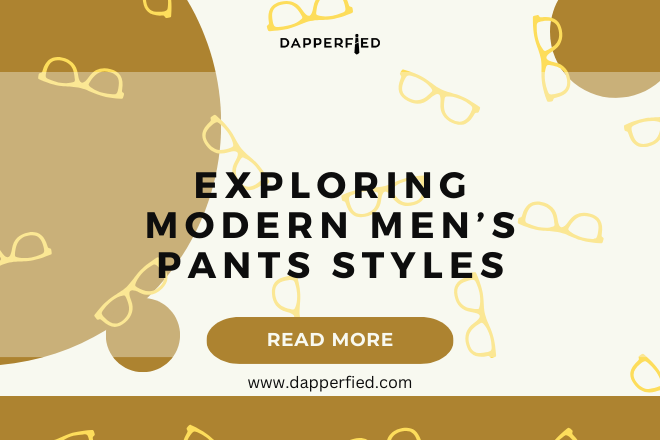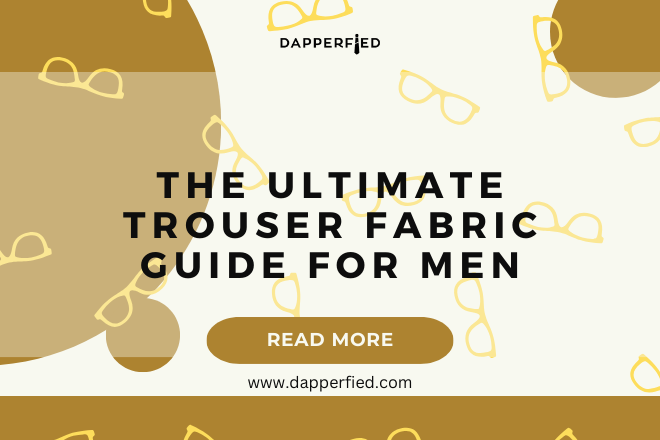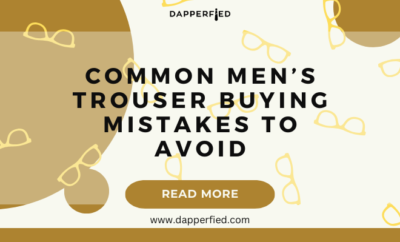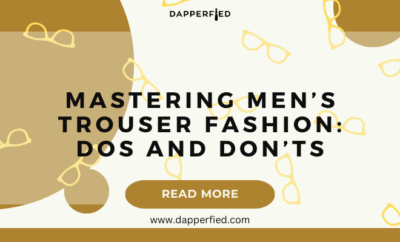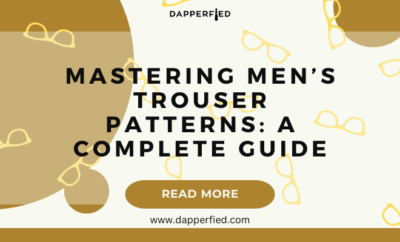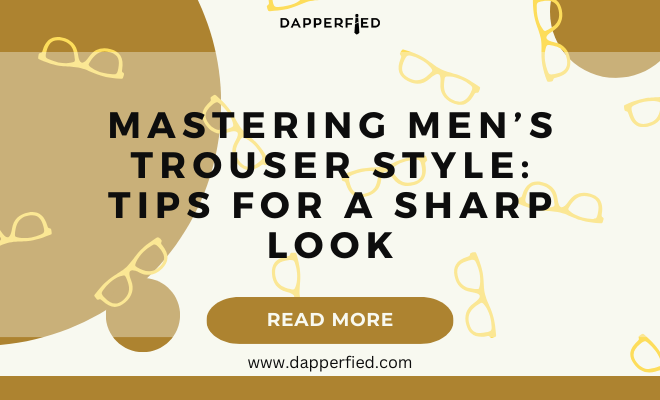
Men's Style
Mastering Men’s Trouser Style: Tips for a Sharp Look
When it comes to dressing well, understanding fit and proportions is key. The fit of your clothing can make or break your entire look. Ill-fitting clothes can make you appear sloppy and unkempt, while well-fitted clothes can enhance your silhouette and give you a polished appearance. Understanding your body shape and proportions is the first step in achieving a well-fitted look. Whether you have a pear-shaped, hourglass, apple-shaped, or rectangular body, knowing how to dress for your specific shape is essential. For example, if you have a pear-shaped body, you may want to highlight your waist and balance out your hips with A-line skirts and fitted tops. On the other hand, if you have an hourglass figure, you may want to emphasize your curves with fitted dresses and tailored jackets.
Proportions also play a crucial role in achieving a well-put-together look. Understanding how to balance different elements of your outfit, such as the length of your top with the rise of your pants or the width of your sleeves with the width of your pants, can make a significant difference in how you appear. For instance, if you are wearing wide-leg trousers, pairing them with a fitted top can create a balanced and flattering silhouette. Similarly, if you are wearing a voluminous top, opting for slim-fitting bottoms can help maintain proportion and create a more streamlined look. By understanding fit and proportions, you can ensure that your clothing complements your body shape and creates a harmonious overall appearance.
Key Takeaways
- Understanding fit and proportions is essential for a polished and put-together look.
- Choosing the right fabric can make a significant difference in the overall appearance and comfort of the outfit.
- Selecting the appropriate rise of pants or skirts can greatly impact the overall silhouette and comfort.
- Styling with the right shoes can elevate the entire outfit and tie the look together seamlessly.
- Adding the perfect belt can cinch the waist and add a touch of sophistication to the ensemble.
- Incorporating the right accessories can elevate a tailored look from ordinary to extraordinary.
- Mastering the tailored look requires attention to detail and a keen eye for fit, fabric, and styling.
Choosing the Right Fabric
Selecting the right fabric for your clothing is essential for achieving a polished and sophisticated look. The fabric not only affects the overall aesthetic of your outfit but also influences its comfort and durability. When choosing fabric, consider the occasion and the season. For formal events, opt for luxurious fabrics such as silk, satin, or velvet, which exude elegance and sophistication. For casual wear, breathable fabrics like cotton, linen, or chambray are ideal for creating a relaxed and effortless look. Additionally, consider the season when selecting fabric. Lightweight and breathable fabrics are perfect for summer, while heavier fabrics like wool and cashmere are more suitable for winter.
Furthermore, pay attention to the quality of the fabric. High-quality fabrics not only look better but also last longer. Investing in well-made garments crafted from premium materials can elevate your entire wardrobe. Additionally, consider the drape of the fabric. The way a fabric hangs and moves can significantly impact the overall look of your outfit. For instance, flowy fabrics like chiffon or silk can create a romantic and ethereal aesthetic, while structured fabrics like tweed or denim can convey a more tailored and polished appearance. By choosing the right fabric for your clothing, you can enhance the overall look and feel of your outfits.
Selecting the Appropriate Rise
The rise of your pants is a crucial factor in achieving a well-tailored look. The rise refers to the distance between the crotch and the waistband of the pants and plays a significant role in determining the overall fit and comfort of the garment. When selecting the appropriate rise for your pants, consider your body shape and personal style. For those with a shorter torso, opting for a lower rise can create the illusion of a longer upper body, while those with a longer torso may prefer a higher rise to balance out their proportions.
Additionally, consider the intended use of the pants when choosing the rise. For formal or professional settings, a mid-rise or high-rise pant can create a more polished and sophisticated look. On the other hand, low-rise pants are more suitable for casual or relaxed settings. It’s also essential to consider comfort when selecting the rise of your pants. A rise that is too low can be uncomfortable and may result in constant readjustment, while a rise that is too high can feel constricting. Finding the right balance between comfort and style is key when selecting the appropriate rise for your pants.
Styling with the Right Shoes
| Shoe Type | Styling Effect |
|---|---|
| Sneakers | Casual and sporty look |
| High Heels | Elegant and formal appearance |
| Boots | Edgy and stylish vibe |
| Flats | Comfortable and versatile |
Choosing the right shoes is essential for completing a well-tailored look. The shoes you wear can significantly impact the overall aesthetic of your outfit and can either elevate or detract from your appearance. When styling with the right shoes, consider the occasion, the color palette of your outfit, and your personal style. For formal events or professional settings, classic options such as pumps, loafers, or oxfords are timeless choices that exude sophistication and elegance.
When it comes to casual wear, sneakers, ballet flats, or ankle boots can add a touch of effortless chic to your outfit. Additionally, pay attention to the color and material of your shoes when styling them with your outfit. Neutral-colored shoes such as black, nude, or tan are versatile options that can complement a wide range of outfits. However, don’t be afraid to experiment with bold colors or statement-making textures to add an unexpected twist to your look.
Furthermore, consider the silhouette of your shoes in relation to the rest of your outfit. For instance, if you are wearing wide-leg trousers, opting for heels with height can help elongate your legs and create a more balanced silhouette. On the other hand, if you are wearing a fitted dress or skirt, pairing it with flats can create a more relaxed and comfortable look. By styling with the right shoes, you can enhance the overall aesthetic of your outfit and create a cohesive and well-put-together appearance.
Adding the Perfect Belt
The addition of a belt can not only cinch your waist but also add an element of style and sophistication to your outfit. When adding a belt to your ensemble, consider its functionality as well as its aesthetic appeal. A belt can be used to define your waist and create a more flattering silhouette, especially when wearing dresses or oversized tops. Additionally, it can add visual interest to an otherwise simple outfit by introducing texture, color, or pattern.
When choosing a belt, consider its width and material in relation to your outfit. A wider belt can make a bold statement and is ideal for cinching dresses or adding structure to oversized tops. On the other hand, a slim belt can create a more understated and polished look and is perfect for adding definition to tailored trousers or skirts. Furthermore, pay attention to the material of the belt in relation to the rest of your outfit. Leather belts are classic options that can complement both formal and casual looks, while woven or fabric belts are more suitable for relaxed and bohemian-inspired ensembles.
It’s also essential to consider the color of the belt in relation to the rest of your outfit. Matching the color of your belt to your shoes or handbag can create a cohesive and harmonious look. However, don’t be afraid to experiment with contrasting colors or statement-making buckles to add an unexpected twist to your outfit. By adding the perfect belt to your ensemble, you can not only enhance its functionality but also elevate its overall aesthetic.
Incorporating the Right Accessories

Accessories play a crucial role in completing a well-tailored look. They have the power to elevate even the simplest of outfits and add personality and flair to your ensemble. When incorporating accessories into your outfit, consider their impact on the overall aesthetic as well as their ability to complement your clothing. Statement jewelry such as bold earrings or chunky necklaces can add an element of drama and sophistication to an otherwise understated outfit.
Additionally, scarves are versatile accessories that can be worn in various ways to add color, texture, or pattern to your ensemble. When it comes to handbags, consider their size and shape in relation to your outfit. Structured handbags exude elegance and are perfect for formal events or professional settings, while slouchy or oversized bags are more suitable for casual wear.

Furthermore, pay attention to the cohesion of your accessories with the rest of your outfit. Matching metals in your jewelry with hardware on your handbag or shoes can create a harmonious and polished look. However, don’t be afraid to mix metals or experiment with different textures and materials to add visual interest to your ensemble.
Mastering the Tailored Look
Mastering the tailored look is all about attention to detail and precision in styling. From fit and proportions to fabric selection and accessorizing, every element plays a crucial role in achieving a polished and sophisticated appearance. When mastering the tailored look, invest in well-fitted garments that complement your body shape and proportions.
Additionally, pay attention to fabric quality and choose materials that not only look good but also feel comfortable and luxurious against your skin. Selecting appropriate rises for pants and styling with the right shoes can further enhance the overall aesthetic of your outfit.
Adding belts and incorporating accessories are essential steps in elevating your ensemble and adding personality to your look. By mastering these elements and paying attention to detail in every aspect of styling, you can achieve a well-tailored look that exudes confidence and sophistication in any setting.
If you’re looking to upgrade your spring wardrobe, be sure to check out this article on men’s spring fashion tips for some great style inspiration. And if you’re in need of a new suit to go with those stylish trousers, be sure to read this article on affordable men’s suits for a helpful checklist. And don’t forget to accessorize with a sleek watch like the Movado Men’s 0606502 Museum Stainless Steel Watch with Black Leather Band, featured in this article here.
FAQs
What are some popular trouser styles for men?
Some popular trouser styles for men include straight leg, slim fit, bootcut, and relaxed fit. Each style offers a different look and fit, catering to different body types and personal preferences.
How should men choose the right trouser style for their body type?
Men should consider their body type when choosing a trouser style. For example, slim fit trousers are best for slender builds, while relaxed fit trousers are better for those with a larger build. It’s important to try on different styles to see which one flatters the body the most.
What are some tips for wearing trousers in a professional setting?
In a professional setting, men should opt for tailored trousers in classic colors such as navy, black, or grey. The trousers should be well-fitted and paired with a dress shirt and dress shoes for a polished look.

How can men style casual trousers for a more relaxed look?
For a more relaxed look, men can opt for casual trousers such as chinos or cargo pants. These can be paired with a t-shirt or polo shirt for a laid-back yet stylish outfit. Rolling up the cuffs of the trousers can also add a casual touch.
What are some common mistakes to avoid when wearing trousers?
Common mistakes to avoid when wearing trousers include wearing trousers that are too tight or too loose, choosing the wrong length, and not paying attention to the overall fit. It’s important to find trousers that fit well and flatter the body.

